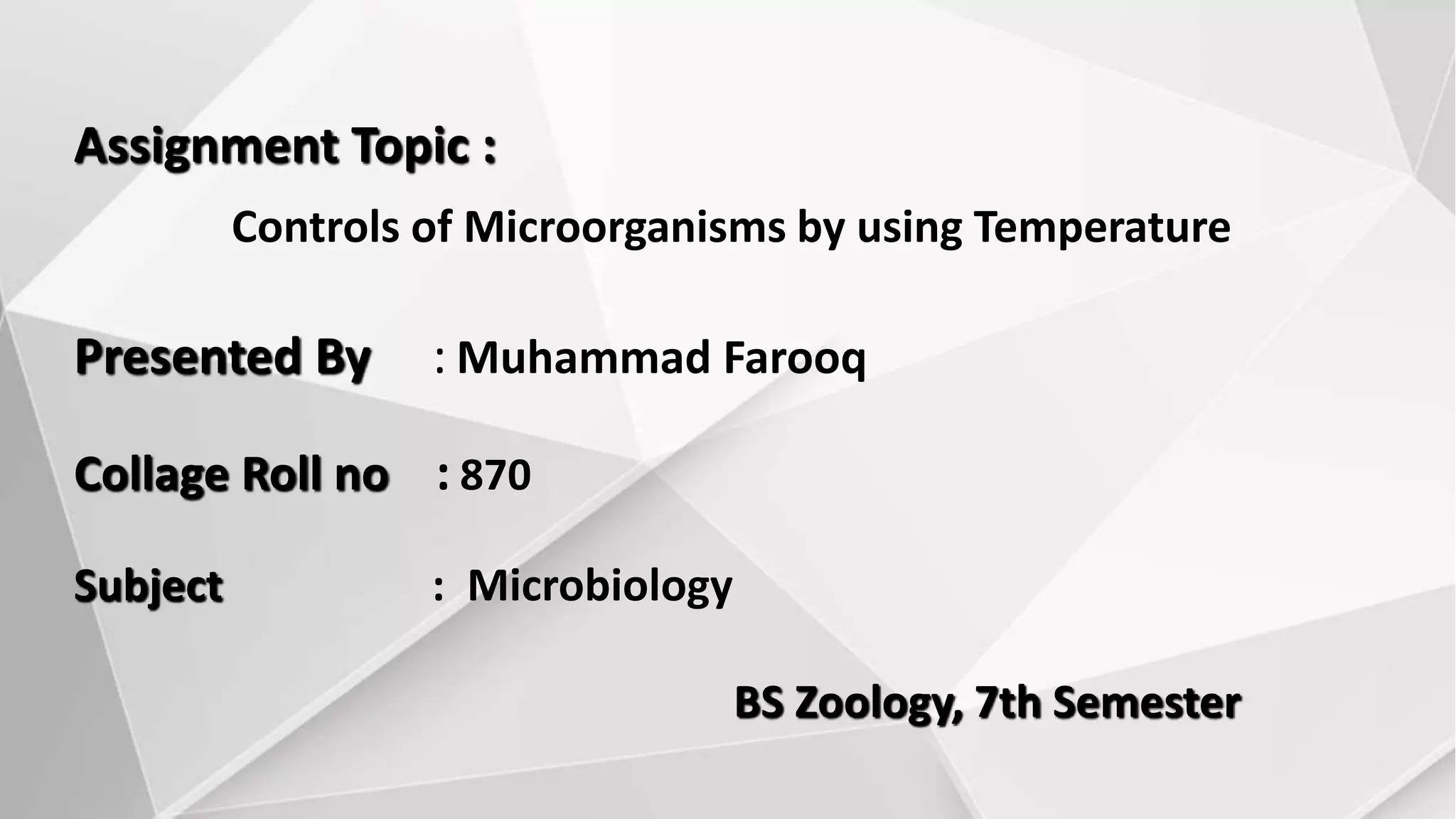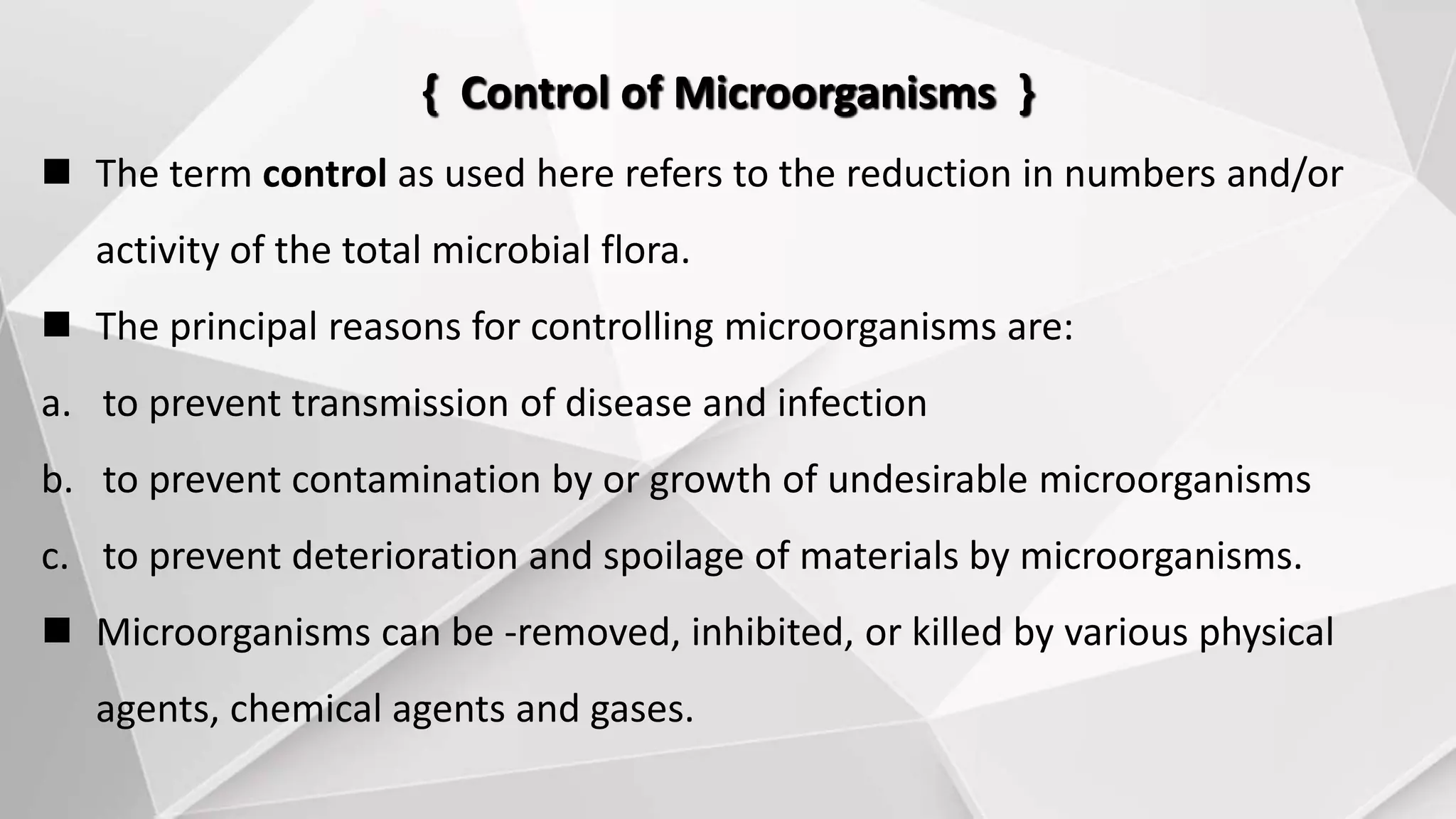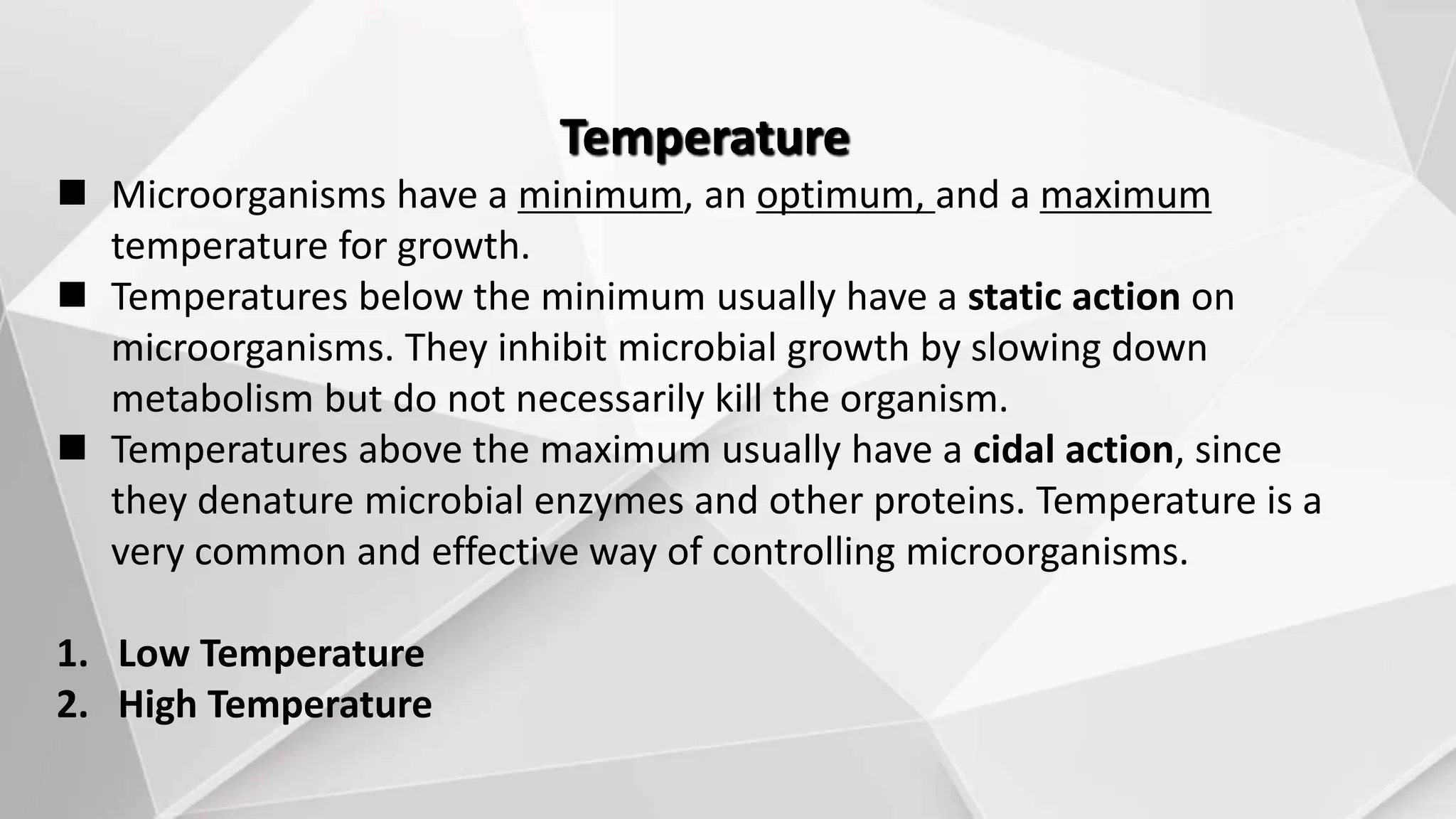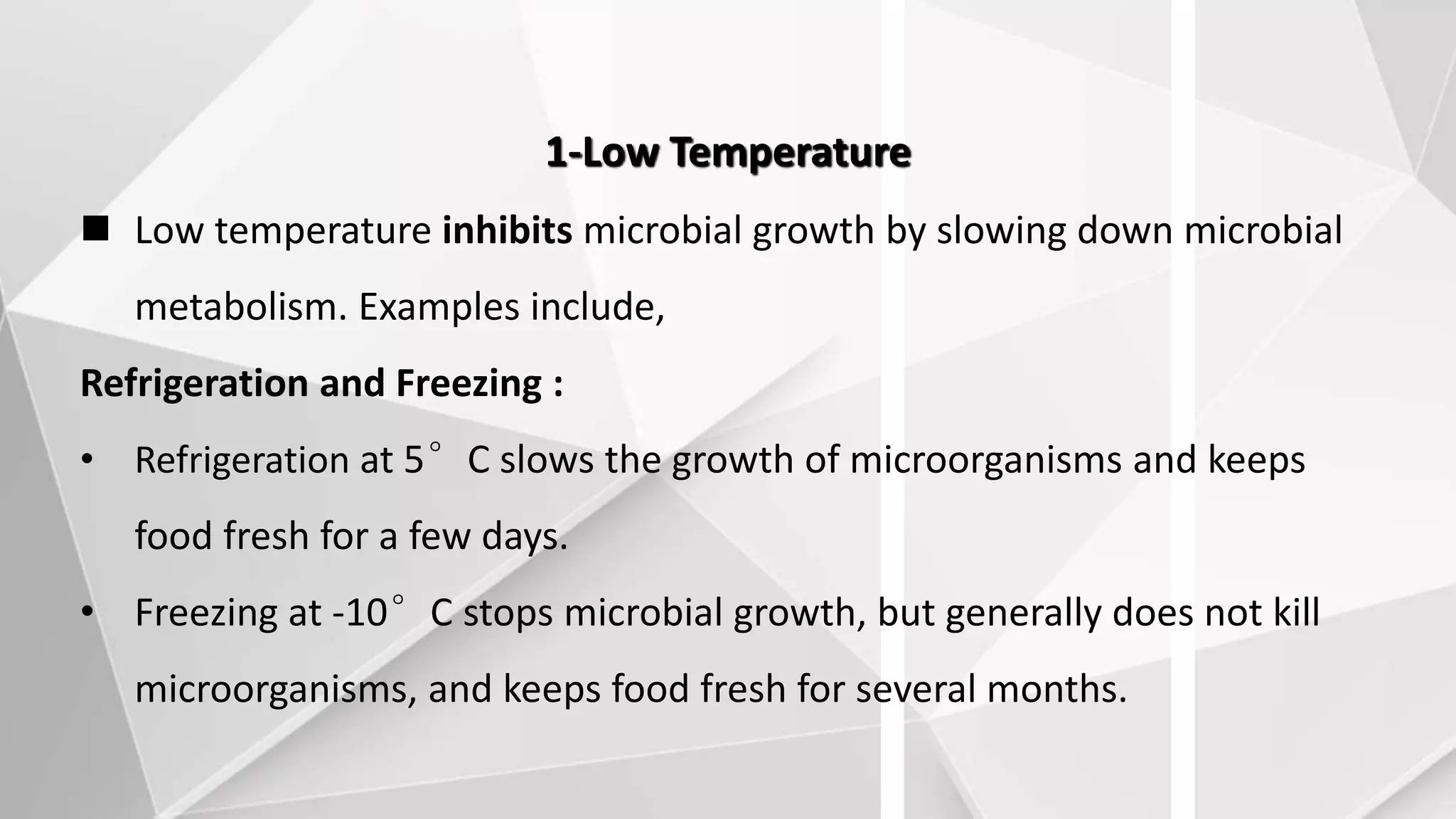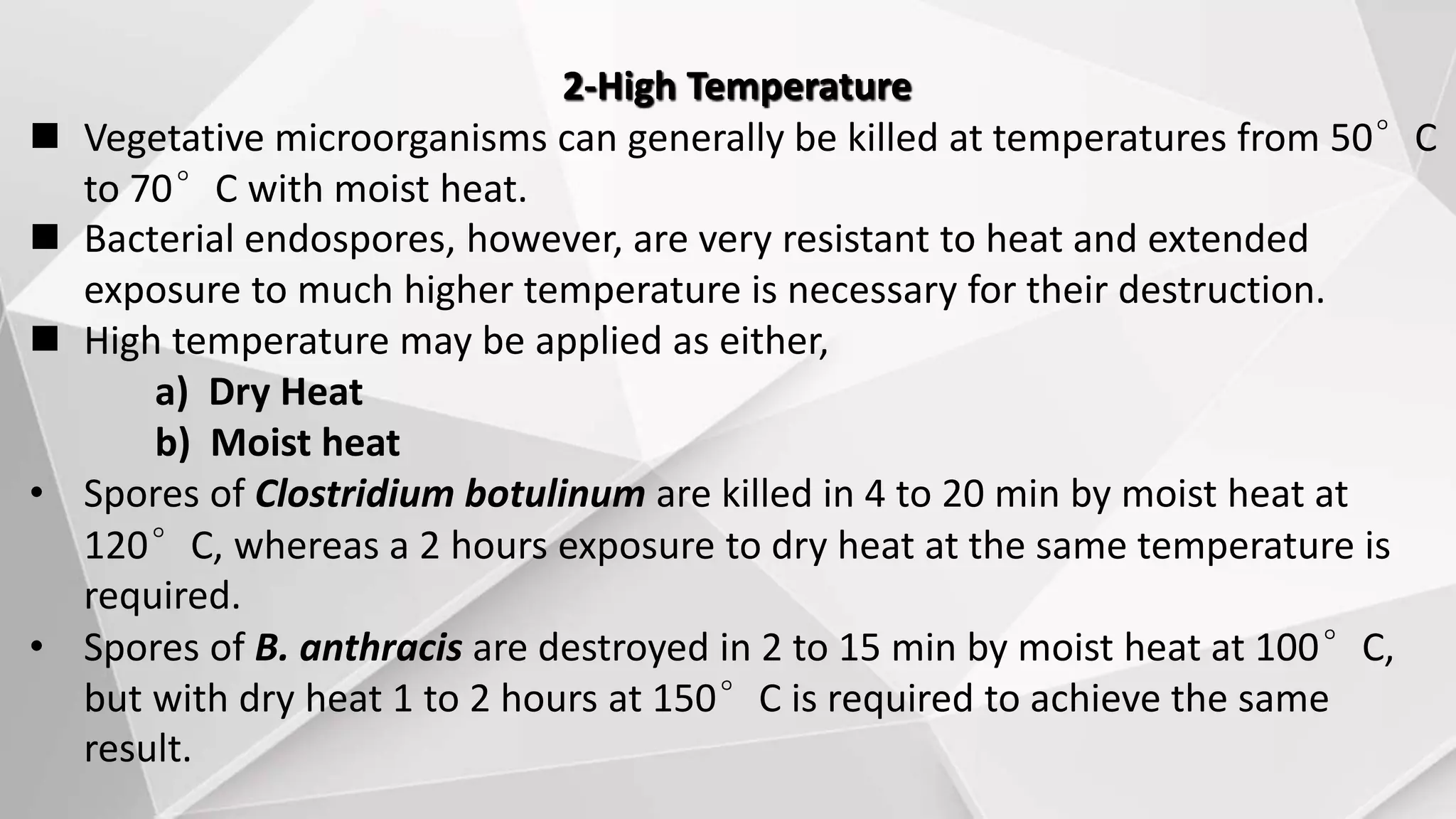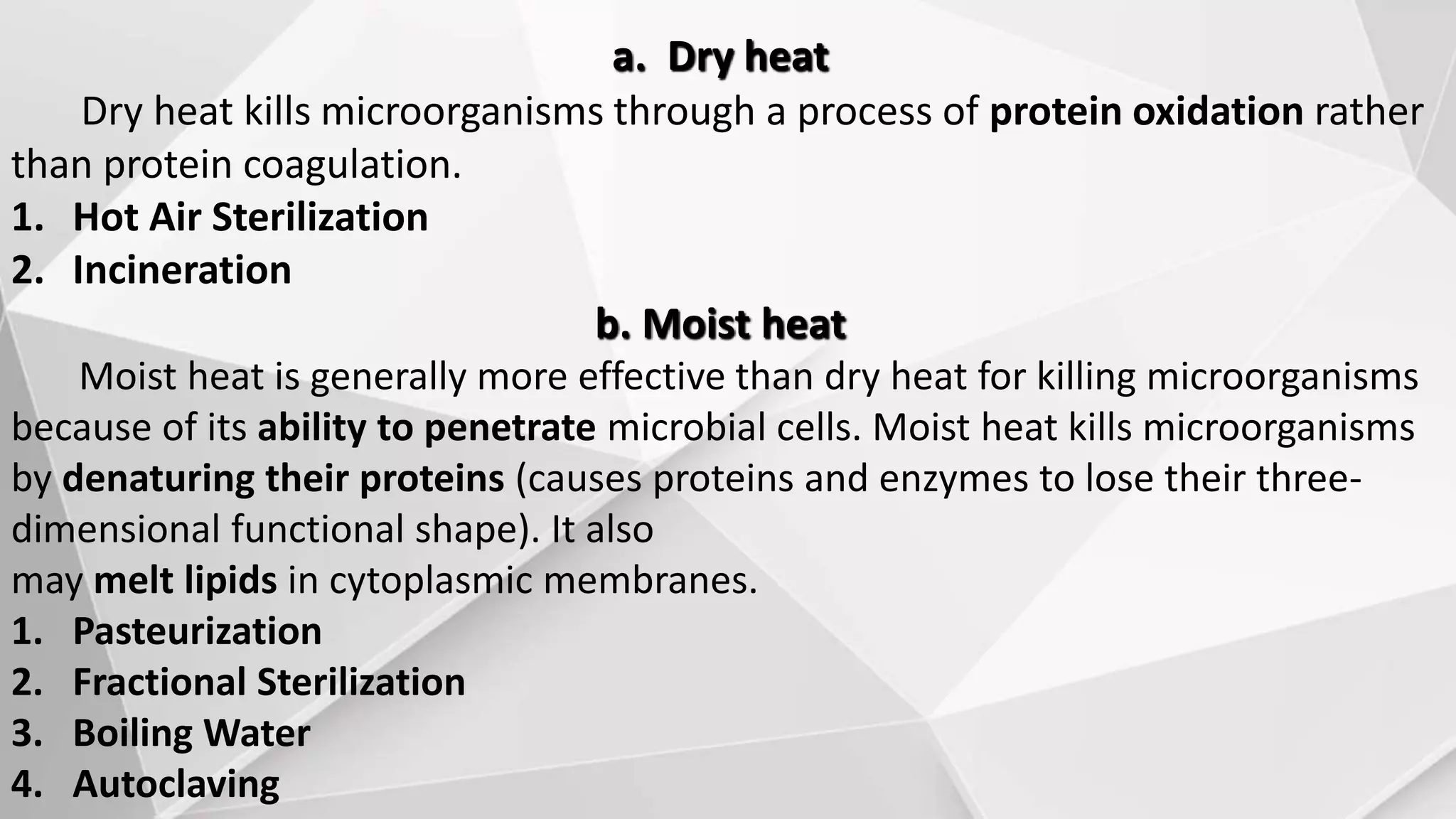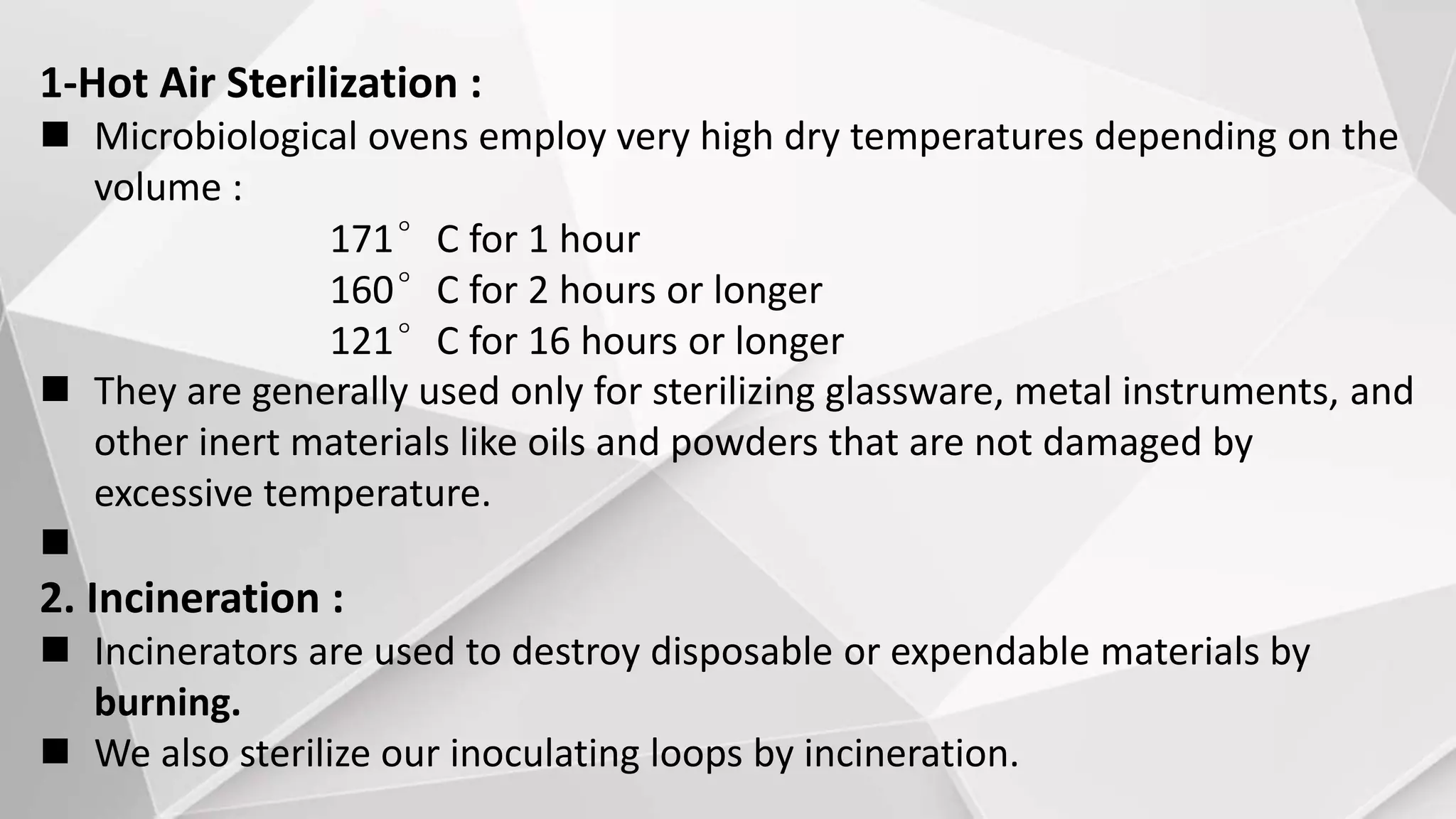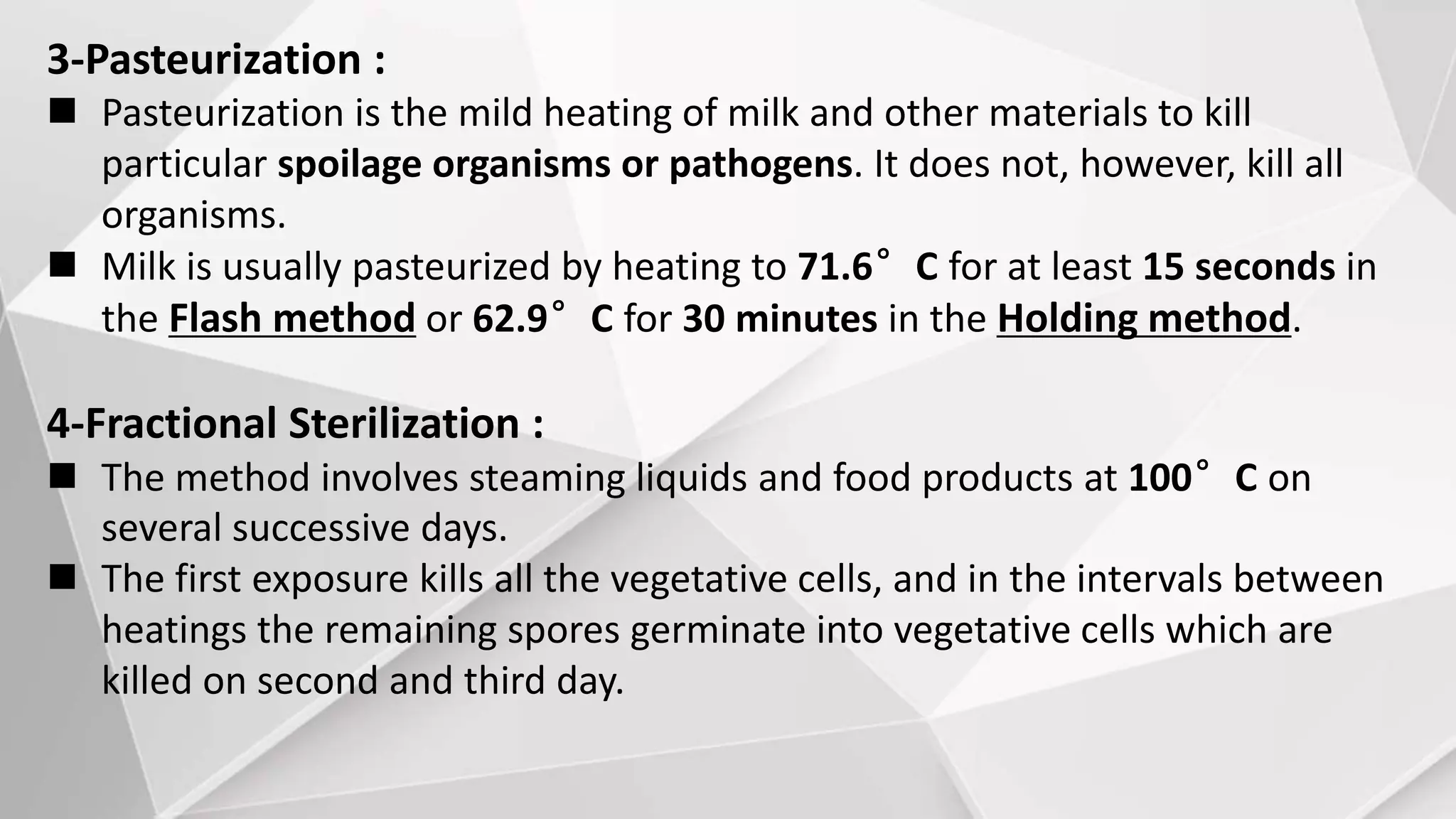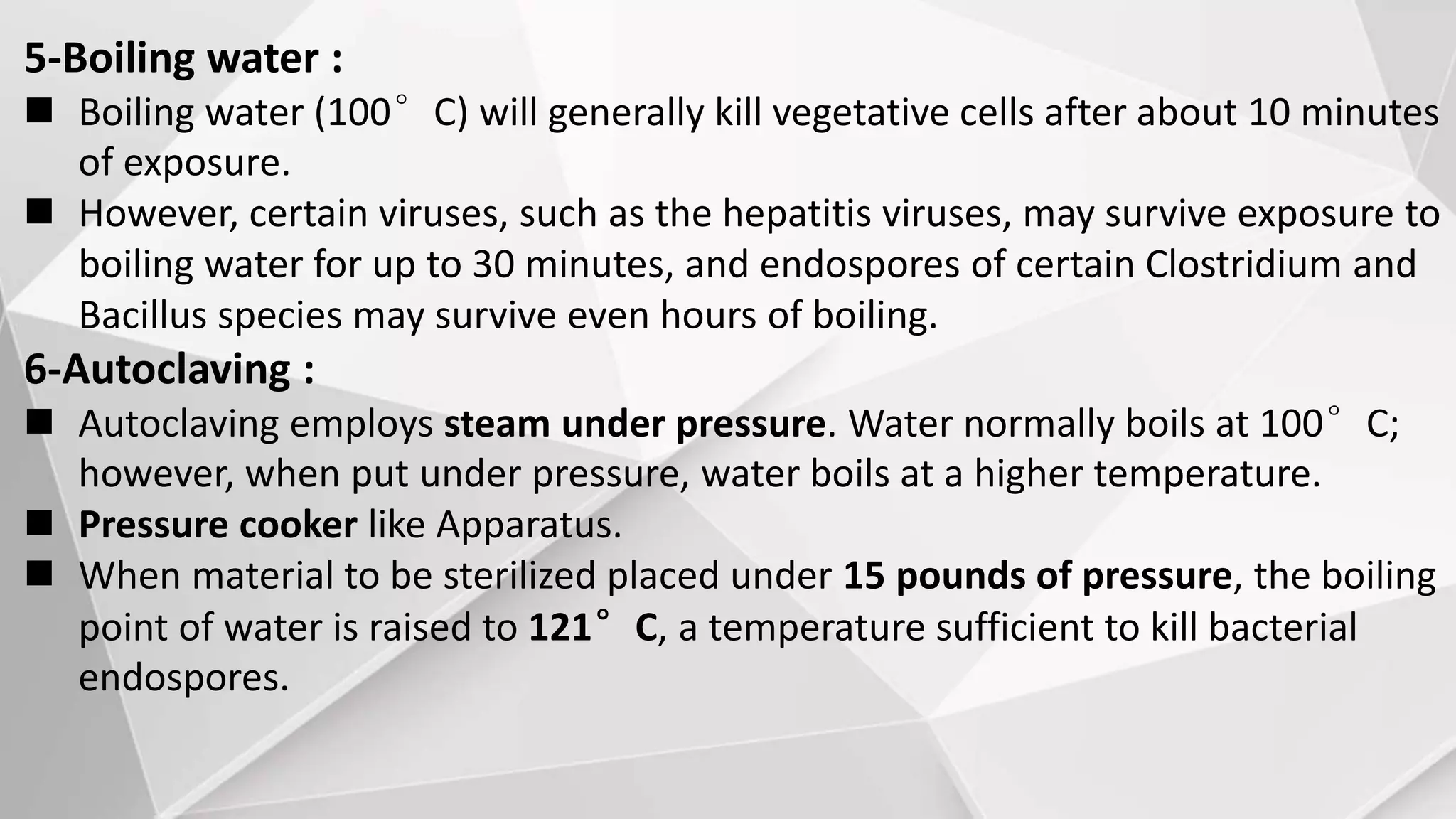This document discusses controlling microorganisms using temperature. It explains that microorganisms have minimum, optimum and maximum temperatures for growth. Temperatures below the minimum inhibit growth by slowing metabolism, while temperatures above the maximum usually kill microorganisms by denaturing enzymes. Low temperatures like refrigeration and freezing inhibit growth. High temperatures like moist heat at 50-70°C can kill vegetative microbes, while endospores require extended exposure to higher heat. Methods of applying high temperature include dry heat through oven sterilization or incineration, and moist heat through pasteurization, fractional sterilization, boiling or autoclaving.
